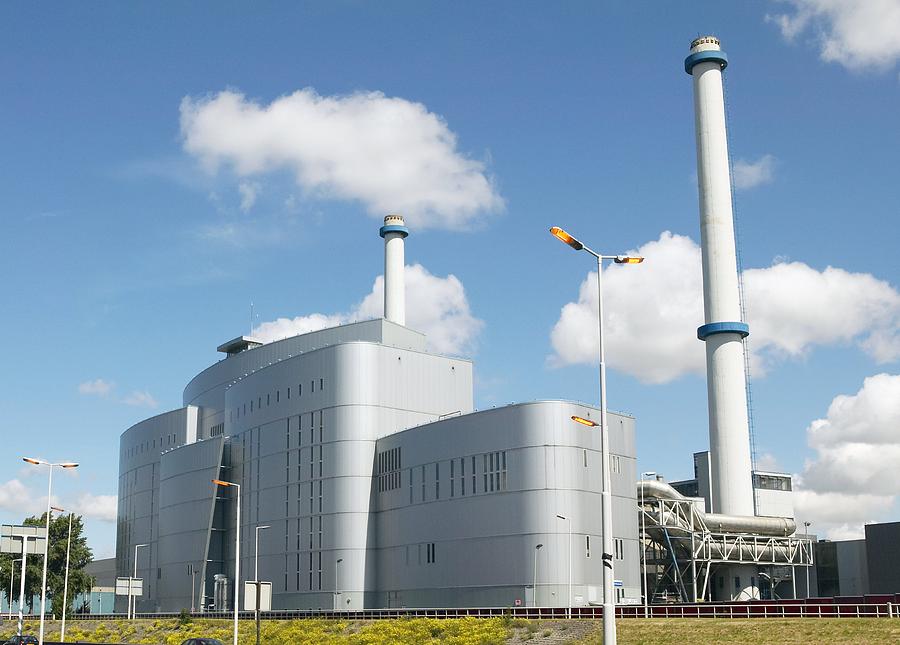Feasibility of a waste to energy facility in bend oregon
A Concept Review
With growing concerns over plastic pollution and carbon emissions, New Cliff Recycling is seeking a sustainable solution that would eliminate plastic waste from the environment while sequestering CO2 into valuable building materials. To assess the viability of this vision, SkyView Scientific was commissioned to conduct a concept-phase review of establishing a Waste to Energy (WtE) facility in Bend, Oregon. This review encompassed an analysis of financials, timelines, processes, logistics, challenges and regulatory requirements.
Understanding WtE History
WtE technology has a robust track record worldwide, particularly in Europe and Japan, where hundreds of facilities incinerate municipal waste to generate energy and minimize landfill waste. In contrast, the United States has been slower to adopt this approach, with only 72 facilities currently operational—most of them aging. One notable exception is the Palm Beach Facility #2 in Florida, constructed by Babcock & Wilcox (B&W) and operational since 2015, which served as a benchmark for this review. We also gained valuable insights from the only WtE facility in Oregon, located in Marion County.
Through discussions with B&W, SkyView Scientific gathered information related to the unit operations, cost estimates, regulatory hurdles, timelines and maintenance requirements. Cross checking with information we learned from the Marion County facility and others across the country, we found the overall design to be relatively consistent.
The Palm Beach Facility #2, which cost $682M to implement, can process 3,000 tons of general municipal waste per day generating 75MW. In Oregon, the Marion County WtE facility can process 550 tons of municipal waste and has operated for 40 years. This facility will be closing soon due to its age and stringent new state regulations.
Conversations with Marion and Deschutes County Municipal Waste Supervisors provided critical data on waste composition, burning efficiency, and the roles of stakeholders such as: counties, trash haulers, recyclers, landfill operators, and incinerators in waste management. The political landscape in Oregon presents challenges. Senate Bill SB488, recently passed, mandates continuous monitoring of specific emissions, a requirement that has effectively forced the Marion facility’s operator, Covanta, to plan its exit from the West Coast. Covanta representatives cited an increasingly challenging regulatory environment, suggesting that any new WtE project in Oregon should anticipate significant legal hurdles and budget accordingly.
Overall WtE Process
The WtE process begins with understanding the variable composition of municipal solid waste, which influences incineration efficiency. The core operations include incineration and boiler systems that generate steam to power turbines, followed by an Air Quality Control System (AQCS) with Flue Gas Treatment (FGT) to ensure compliance. Process outflows include recyclable metals (ferrous and non-ferrous), some ash can be used in construction materials with the remainder returned to landfills, and stack effluent containing CO2, which could be sequestered. In this process approximately 75% of the waste is consumed.
Revenue streams for a WtE facility include tipping fees for waste disposal, electricity sales from steam turbines, potential energy capacity fees (as seen in Florida), and income from recycled metals. Innovative CO2 utilization ideas emerged during the review, such as using elevated CO2 levels in industrial greenhouses to grow bamboo for construction or duckweed for fertilizer and cattle feed. However, CO2 sequestration and purification would significantly increase CAPEX.
Evaluation of EPA and Oregon Emission Limits
EPA emission limits are well-defined, and modern AQCS systems, like those designed by B&W, readily meet these standards. Oregon’s Administrative Rules (OAR) largely align with EPA requirements but are supplemented by SB488’s mandate for continuous monitoring of a broader range of emission components, a stricter standard than the EPA’s. SkyView Scientific aggregated these requirements and mapped emission levels across unit operations, clarifying the cleanup process for New Cliff Recycling.
Review of Potential Grants
The review identified several Department of Energy (DOE) grants applicable to WtE projects. Inquiries have been sent to the DOE, with responses pending, offering a potential avenue to offset initial costs.
Financial Analysis
Estimating the capital and operating cost of a large-scale facility this early in a project is difficult due to the large number of unknowns and material cost variability. The goal at this concept review was to begin to formulate the financial picture and search for red flags that would make this project a non-starter. For the capital project estimate we started with the financials for the Palm Beach Facility #2 as a baseline. Adjusting for inflation and other benchmarks we developed a cost estimate to build a 1,000 ton per day facility. We were able to cross-check the major components of our estimate with the help of the experts at B&W which increased our confidence. This overall capital cost value is consistent with what New Cliff Recycling was expecting.
Armed with the operational budget for the Palm Beach Facility #2 as well as information learned in discussions with the Marion County plant, an operational cost estimate was developed. Revenues for this facility would include tipping fees from municipal waste haulers, power generation sales, and metals recycling. Operational expenditures include maintenance staff, Air Quality Management System (AQMS) reagents, AQMS testing systems, ash disposal, and facility maintenance. The analysis shows that significant profit can be generated year over year with a facility of this type.
Timeline
WtE projects are notoriously lengthy, often spanning over a decade. The most unpredictable and time-intensive phase involves securing state permits and navigating litigation, particularly given Oregon’s regulatory climate.
Conclusion
A WtE facility in Bend, Oregon, presents a profitable opportunity that could reduce landfill waste by 75%, addressing both plastic pollution and energy needs. While the technical and financial aspects align favorably, success hinges on overcoming regulatory and legal challenges. With careful planning, grant support, and innovative CO2 strategies, this project could position Bend as a leader in sustainable waste management.

